Ever seen a horse out in the cold and instinctively felt like throwing a blanket over it? While this could be a well-meaning gesture, it may cause more harm than good in some cases. Just like humans and every other warm-blooded mammal out there, horses are capable of feeling cold. It happens when they are exposed to harsh elements such as extreme cold, heavy rains, etc.
But before you start to think about keeping your horse indoors throughout the winter, you should know that horses are generally capable of withstanding and thriving in way lower temperatures than humans and many other mammals. Horses, unlike humans, do well in temperatures as low as 18 degrees Fahrenheit or less.
However, horses are not completely impervious to harsh weather conditions. Their relative insusceptibility to lower temperatures is due to several biological and psychological reasons. Having said that, you should always be on the lookout for signs of hypothermia during cold weathers to protect your horses.
How Cold is Too Cold for Horses?
Several biological factors would allow a horse to stay warm even at distressingly low temperatures for humans. One of these is its thermoneutral zone or range.
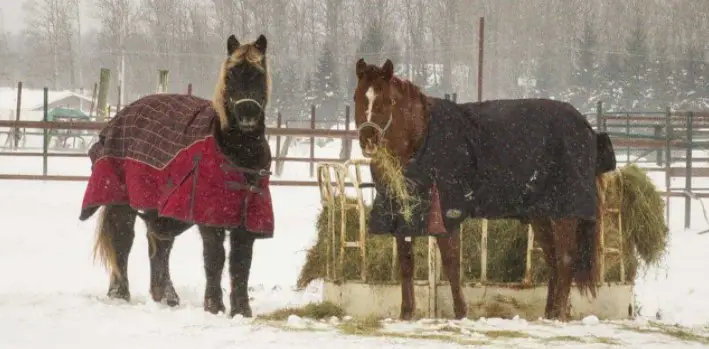
A thermoneutral zone (TNZ) is a range of temperatures in which a person or animal unclothed can withstand the still air without increasing metabolic activity to produce heat for stabilizing core body temperature. For humans, the range is about 82.4°F to 89.6°F. However, in the case of horses, the thermoneutral zone falls between the range of 41°F to 77°F. It means that horses are basically warm enough even at the temperatures at which the human body starts to increase metabolism to produce heat.
The lower temperature of the thermoneutral zone is called the lower critical temperature (LCT). The animal has to produce a significant amount of heat to stabilize its core temperature at a temperature below the LCT. When this heat production cannot catch up to the rate of heat loss, the body’s core temperature starts to drop.
Horses have, over time, evolved significantly to adapt to extreme weather conditions. Just before each winter season, horses begin to grow a winter coat to regulate their body temperature. The winter coat acts as an insulator that locks in the horse’s natural body heat produced by metabolic processes during the cold season.
Depending on the length and density of a horse’s winter coat, they might be able to endure temperatures as low as 0° Fahrenheit. With proper outdoor shelter, horses can withstand temperatures as low as – 40° Fahrenheit!
The limbs of horses also operate like a “radiator system,”. The arteries and nerves on the limbs of a horse run in such a way that warm blood in the arteries warms up cooler blood in the veins moving downwards. This helps to drastically retain heat inside the body. The lower parts of the horse’s limbs are fortified to withstand the cold without cooling the rest of its body.
Now, while your horse’s physiology is well equipped to handle some degree of cold, there will be times where the temperature is way too low for their body’s natural mechanism to cope with. At this point, they will need some external warmth and attention.
How to Know If a Horse is Cold
Extreme colds can increase your horse’s chances of developing hypothermia. There are no definite ways of knowing if your horse is feeling cold. However, there are a few telltale signs to help you decide if your horse might need some extra warmth.
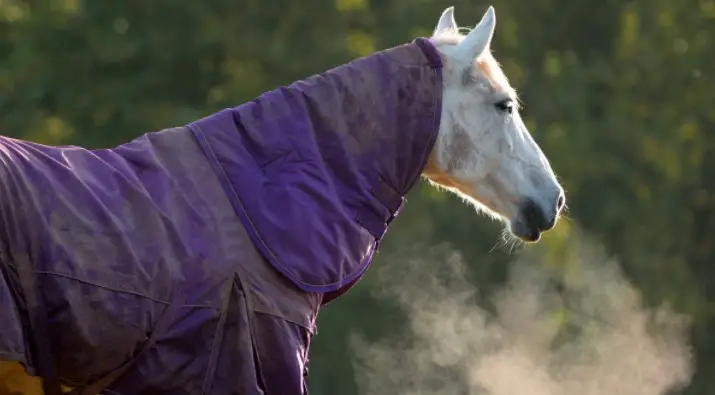
Shivering
Your horse might be able to brace lower temperatures than you can. Having said that, you must be on the lookout to see if your horse has the shivers. Shivering is an involuntary contraction of the body muscles. Cold temperatures lead to the activation of the shivering reflex to produce heat.
Just like humans, horses do shiver when cold. While the shivers, generally, could be a symptom of an underlying illness, shivering during the winter or after prolonged exposure to cold temperatures or moisture could mean that your horse needs some warmth.
Horses can shiver for a short while when cold and then run around to create heat. But when they continue to shiver for a long time, it is a sign that you provide them with an external heat source.
A tucked tail
Horses might tuck in their tails for many reasons. However, in low temperatures, they may turn their buttocks toward the wind and tuck in their tails between their legs to protect themselves from the cold.
Mustering together with other horses
Horses often huddle together when exposed to extreme conditions to share their body heat. Mustering together also helps them block out wind and protect themselves and the weaker members of the herd from the harsh weather.
Temperature check
In cases where you suspect that your horse might be cold, it’s best to check its body temperature. A rectal thermometer is best suited to check a horse’s body temperature. The average body temperature range of a horse is 99°F to 101°F. So, if your horse’s body temperature drops below 99°F, there’s a huge chance that your horse is feeling cold.
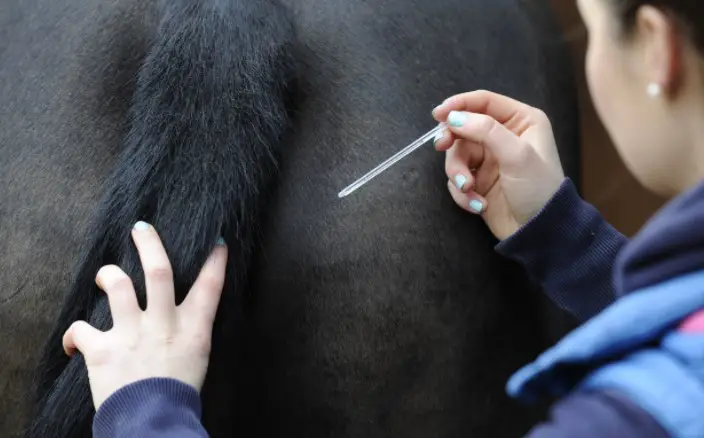
Unusual behaviors
Also, if your horse starts running around uncharacteristically in the cold, or if you find it constantly seeking shelter, it’s a clear sign that the cold has become unbearable for it. It is then safe to assume that it is trying to find ways to increase its body temperature.
How Do You Keep a Horse Warm?
If you notice any of the above signs, especially during a cold or rainy day, then it is clear that the horse needs external measures to keep alive. Here are a few ways to help raise the horse’s body temperature.
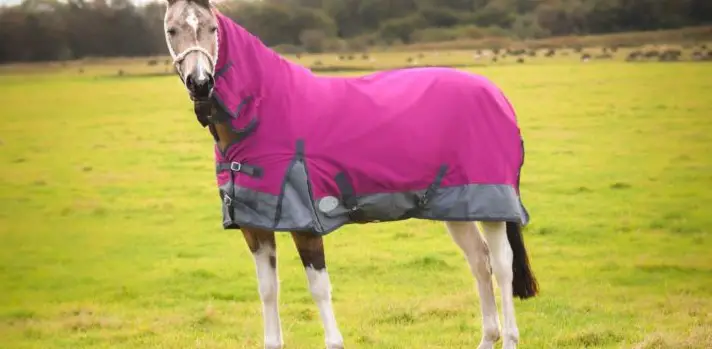
Blanketing
While it seems like a great idea to throw a blanket over your horse, it’s important to know just when and if your horse needs a blanket.
Thankfully, horses grow out an extra layer of hair (winter coat) before the cold season to provide insulation and keep their natural heat contained.
When it gets cold, the hairs “stand up” to create air pockets to trap warmth in. So, if a blanket is put over the horse at that moment, the “standing” hair would fall, which breaks the natural insulation. In this case, blanketing the horse would make it colder.
However, horses with clipped coats, older horses, and young or sickly horses can be blanketed appropriately with suitable blankets. It is also perfectly fine to blanket a healthy horse not properly acclimatized to the cold temperature.
Provide shelter for the horse
Like humans, horses instinctively need to shelter themselves if they face unfavorable weather conditions.
Thus, horses must be provided with some roofed shelter, especially during winter. If shelter is not available, ensure that the horses have access to trees that can provide some protection.
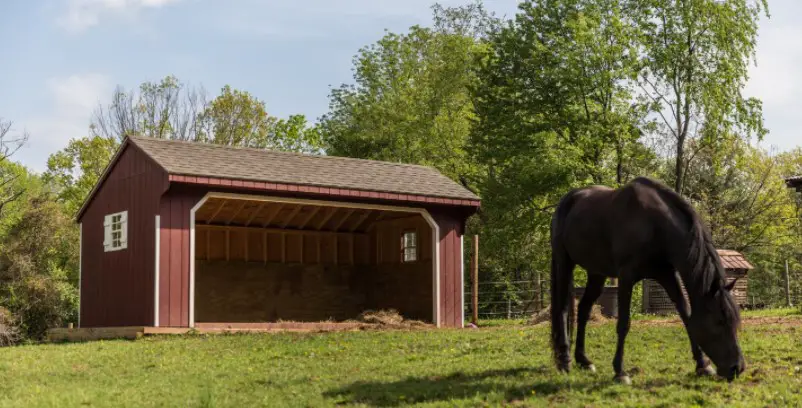
The winter coat helps insulate its body during the cold. However, the coat can no longer sustain its insulation mechanism if the coat gets wet due to rain or other precipitation. But if the coat gets wet due to rains or other precipitation, it can no longer sustain its insulation mechanism. Thus, shelters increase a horse’s likelihood to thrive in the cold. A healthy horse with a decent winter coat can withstand temperatures as low as 0°F. But with adequate shelters in place, the horse can tolerate ambient temperatures as low as – 17°F.
Increase the horse’s food intake
Horses have to expend a lot of energy to stay warm in the cold. So, it is necessary to produce more energy to keep its core temperature stable. Horses produce body heat when their hindgut ferments the fiber they consume. Thus, increasing your horse’s food intake in the cold seasons can significantly help it stay warm.
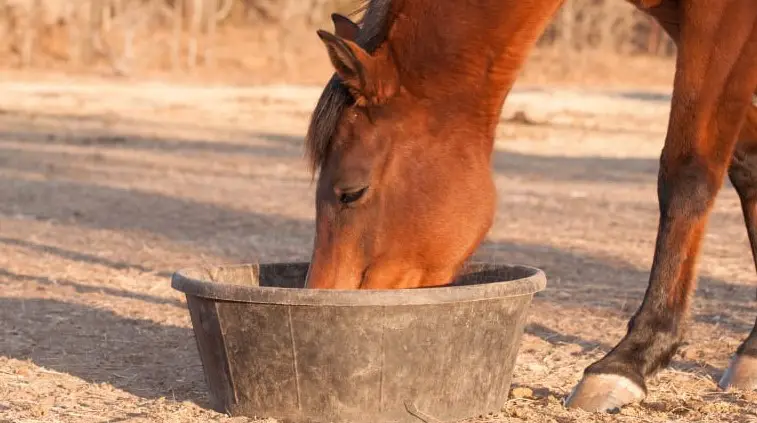
Digestion of high-fiber feeds produces a greater amount of heat than feeds with lower fiber. Since it takes longer for hay to digest, the metabolic process produces energy that would keep the horse warmer for longer.
Optimize the horse’s water intake
In the winter or in frigid temperatures, you have to actively maximize your horse’s water intake to avoid dehydration. An adult horse should consume at least 11 gallons of water a day during the cold. If your horse does not increase its water intake during the winter, it will likely eat less. Eating less during winter for a horse could lead to the horse struggling to keep up energy levels to produce warmth.
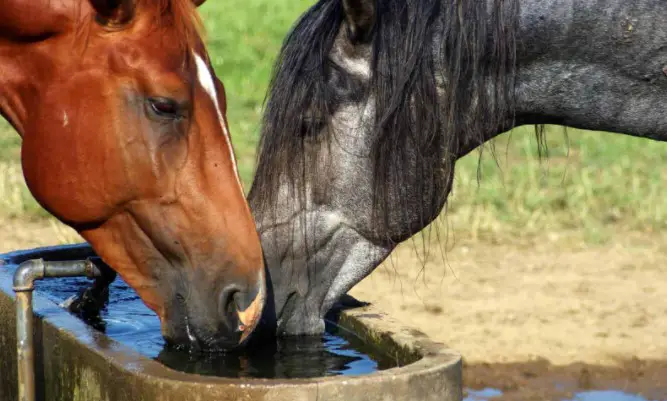
Also, in cold temperatures, it is best to keep your horse’s drinking water within the range of 45°F to 65°F. This temperature range is more palatable for horses’ consumption than ice-cold water. Ensure that you always full your horse’s water troughs with water and that the water does not freeze over.
Conclusion
It can be tricky to tell if or when your horse is feeling cold. But if you are patient with observing changes in its behavioral patterns or demeanor, you’ll be halfway there.
Something else to note is that you should not keep your horses from playing or enjoying the outdoors. As long as your horse is well acclimatized to the cold weather, you should not always force it into its stable for shelter.
If you work with horses or have some under your care, you must learn to recognize the signs that the animals are feeling cold. It is also essential to know when to provide extra warmth, such as blankets, and when to let the horses be. The bottom line is that you should observe your horses closely on cold days but only intervene when the animals cannot ward off the weather naturally.
